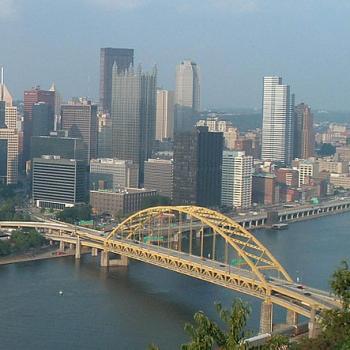I tried hard to like High-Rise. I really did. I was pleased to see that Amazon had it on demand ahead of its May 13th US theater release. I love strange and surreal films; I even love violent films, and films that deal with the darker, more animalistic parts of human nature. I love movies that deal with Dystopias, possible futures and bizarre alternate presents. I love Tom Hiddleston, who does an excellent job as the main character, a dapper yet troubled Doctor Robert Laing. It’s a spectacular performance. All of the supporting cast does equally well. I loved the cinematography; High-Rise is brilliantly filmed and fun to watch. Any still from this movie could be put in a gallery as a fine art photograph. The music is first rate. The costumes are wonderful, with the exception of the fake pregnancy pillow worn by Elisabeth Moss. There’s some clever nihilistic dialogue, including a bespectacled child who says “Heaven’s not real, stupid.” There were plenty of things to enjoy about High-Rise, but I didn’t enjoy it. Because underneath all that wonderful sizzle lies a poorly conceived horse meat steak.
High-Rise, which is based on a novel by J. G. Ballard, is the story of the aforementioned Doctor Laing, a neurosurgeon of some sort who moves into a brand new high rise apartment building with faulty wiring. The building quickly devolves into chaos as the power goes out. I get that last sentence from the description that was supplied when I rented the movie from Amazon. I myself couldn’t tell you what the movie is about. It makes absolutely no sense.
The titular high-rise is one of five luxury apartment buildings arranged like fingers around a parking lot, somewhere in London in the 1970s, with the architect himself living in a fanciful penthouse on the top floor. Inside, there is a pool, a gym, a restaurant, a spa and a grocery store; it’s designed to give the residents very little reason to leave the building except to go to work. Soon after Laing moves in, power failures start to disrupt the tenants’ lives, particularly among the poor on the lower floors. Sometimes the power goes out for hours at a time.
Now, you or I know what we would do in a situation like this. Even if you’ve never lived in an apartment building with faulty wiring, you know what you would do if the power went out for hours at a time. You would walk out of the apartment building, locate your car or the nearest bus stop, and go find the London equivalent to a 24-hour Waffle House. There is no reason the residents of the film’s high rise could not leave the building, locate their cars or the nearest bus stops, and go find a 24-hour Waffle House. No reason at all. Even the poor among them could afford that. There wasn’t a nuclear war, there hasn’t been a plague; there is nothing out of the ordinary about the world in which the high rise is located. The tenants just stay in the building for no reason. Doctor Laing starts skipping out on work so he can stay in the building all day long. Even the rich people who could do anything they want stay in the building. The chaos takes place over three months’ time, plenty of time to file a complaint and break their leases, but they don’t. They stay in the building.
As things go from bad to worse, the tenants start looting the building’s dwindling groceries. Remember, nothing is stopping them from leaving the building to go to another store, and nothing is stopping the grocery store from supplying more fresh food. There’s nothing to stop the tenants from having pizza delivered to their rooms. But the commissary runs out of food, and people start looting and beating each other to bits. They wash their clothing in the increasingly filthy swimming pool when the water runs out, when there’s nothing stopping them from going to find a laundromat. They devolve into savagery and tribal warfare. A woman wearing the worst pregnancy prosthetic I have ever seen is kidnapped to serve as a maid for the upper floors. There are graphic orgies. There are rapes. No one ever seems to run out of candles, wine or cigarettes even as they eat dog food and overcooked horse meat– yes, there’s a horse in the building. No one outside the building ever launches a missing persons investigation to find out what’s happened to the tenants. Authorities never arrive with tear gas to drag everyone out of the building on suspicion of being some kind of cult. The outside world may as well not exist. In the end, Doctor Laing eats a dog and snuggles in bed with one of his paramours, thinking about his strange new life, and a little boy listens to Margaret Thatcher on the radio. And that’s all there is to it.
I was puzzled as I watched the film. I wasn’t even sure if I was watching a thriller or a dark comedy. Afterwards, I read the synopsis on Wikipedia to find out what I had missed. I was sure there was some kind of hidden narrative that would explain the whole thing. But, at least according to my research, I had missed nothing. The action proceeds just as I’ve related to you. There is no reason, however slim, for anyone to do what they’re doing, yet they do.
J. R. R. Tolkien famously said that a good fantasy author does not merely create a world with a green sun; he creates a world where a green sun is normal. The surrealist goes a step further: he creates a world where a green sun is abnormal but believable for the moment. Creating a surreal work of art requires that the artist provide enough realism along with his central impossibility, that the audience will be willing to believe or at least contemplate the impossibility for the duration of the work. In order to portray the impossible, there hast to be a semblance of verisimilitude. There needs to be some thread, however slim, connecting the audience to the made-up world, or the whole thing will collapse on its face. Someone in a narrative like High-Rise ought to say something about why the characters aren’t leaving the building. Claim that most of the tenants ran off on their lease and are living homeless somewhere in London; only a few tenants refuse to leave. Claim that the doors are automatic and made of unbreakable glass, so they can’t be opened until the power comes back on. Claim in so many words what seems to be partly implied, that the surviving tenants discovered their animal nature and stay because they’ve learned to like chaos. I suppose the artists could have been intending a Waiting for Godot situation, where the characters could leave but don’t for no reason at all. But, especially since they do come and go from the high rise in the beginning when things are convenient, that’s conveyed very badly. Given half a reason I would gladly accept the surreal, nihilistic image of feral men and women raping and pillaging in the hallways of an urban apartment building. It’s portrayed masterfully and I want to love it. But High Rise refuses to give me anything at all.
I can’t like a film that won’t let me in. Mystery is fine, and even absurdity, but High-Rise doesn’t “rise” to that level. It’s a beautifully crafted two hours in which no comprehensible plot develops, no one evolves as a character, and no revelation occurs as to what’s going on. If you’d like to sit in a theater watching a montage of beautiful pictures of extremely violent and disturbing nothing happening with a good sound track, you will like this film. Everyone else should skip it.
(The image is a detail from the official poster for High-Rise, and is used in accordance with fair use principles.)












